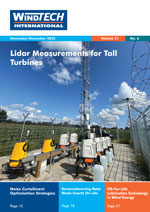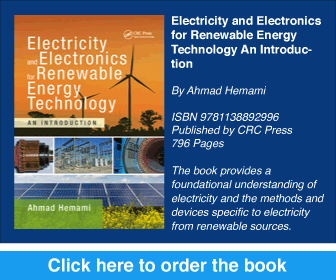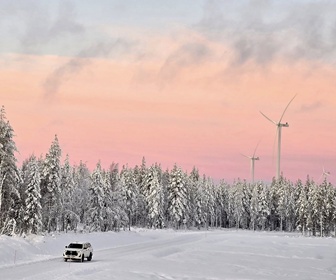- Category: Articles
More Accurate Forecasts can be Obtained by Using Neural Networks
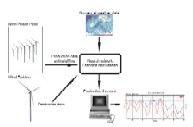 Predictions of the power production for a wind power plant or collection of wind power plants can be improved by using so-called self-adaptive models. These models learn continuously from past experience and are thus able to adjust to changing circumstances, such as seasonal changes, small changes in weather model set-up, or even changes to the numbers or types of wind turbines. This article compares the predictions of Vejr2's neural network model with that of the company's advanced physical model. The neural network model is seen to perform significantly better than the physical model.
Predictions of the power production for a wind power plant or collection of wind power plants can be improved by using so-called self-adaptive models. These models learn continuously from past experience and are thus able to adjust to changing circumstances, such as seasonal changes, small changes in weather model set-up, or even changes to the numbers or types of wind turbines. This article compares the predictions of Vejr2's neural network model with that of the company's advanced physical model. The neural network model is seen to perform significantly better than the physical model.
By Anna Hilden, Vejr2 A/S, Denmark
.- Category: Articles
Insulating Fluids Affect the Environmental and Fire Risks of Wind Turbines
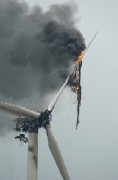 Transformers for wind turbines are generally hidden away in a green box next to the tower. However, out on the open sea, they tend to be placed in the gondola itself, on the outside of the turbine or even on separate platforms when their role is as a central offshore transformer station for a large wind farm. What most transformers have in common is that they have until now been insulated and cooled using mineral oil. Yet the fact that these insulating fluids are flammable and pose an environmental risk makes it necessary to look for alternatives, especially for use on sensitive sites.
Transformers for wind turbines are generally hidden away in a green box next to the tower. However, out on the open sea, they tend to be placed in the gondola itself, on the outside of the turbine or even on separate platforms when their role is as a central offshore transformer station for a large wind farm. What most transformers have in common is that they have until now been insulated and cooled using mineral oil. Yet the fact that these insulating fluids are flammable and pose an environmental risk makes it necessary to look for alternatives, especially for use on sensitive sites.By Florian Gerlach, Journalist, Germany
.- Category: Articles
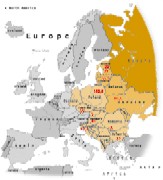 Investors' reduced risk perception has generated a noticeable trend in the financing of wind farms through the bond market. Project developers welcome bond financing since it provides longer term and less expensive financing than conventional loans that mature in 12-14 years. Banks are also financing projects by bundling assets from several wind farms to provide collateral for bonds.
Investors' reduced risk perception has generated a noticeable trend in the financing of wind farms through the bond market. Project developers welcome bond financing since it provides longer term and less expensive financing than conventional loans that mature in 12-14 years. Banks are also financing projects by bundling assets from several wind farms to provide collateral for bonds.By Rosa Tarragó, Commerzbank AG, Germany
- Category: Articles
Making Wind Power Sustainable and Profitable
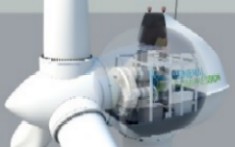 As the need for cleaner and safer sources of power continues to grow, wind power continues to increase in popularity. That growth, however, is limited by conventional wind technology. In this article the author describes the concept of dispatchable wind, and how it can make wind energy sustainable and profitable.
As the need for cleaner and safer sources of power continues to grow, wind power continues to increase in popularity. That growth, however, is limited by conventional wind technology. In this article the author describes the concept of dispatchable wind, and how it can make wind energy sustainable and profitable.
By David Marcus, CEO, General Compression, USA
- Category: Articles
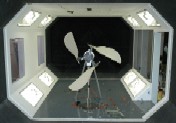 Numerical and experimental results obtained from testing a new generation wind turbine indicate its ability to produce greater power output when compared to conventional horizontal axis wind turbines (HAWTs). With a three-dimensional streamlined geometry, the AXTRA turbine can produce up to three times more torque than a HAWT with the same rotor diameter. The turbine blades are sloped 45? downwind to the axis of rotation, giving an effective increase in flow contact area and making use of the additional components of velocity not present in air flowing around conventional propeller blades. Results have been obtained from experimental comparisons between 870mm diameter AXTRA and HAWT turbines and confirmed by computational fluid dynamical analysis of the flow patterns and loads on the blades. The AXTRA turbine provides new potential, particularly in the smaller end of the wind market (<100kW) where variable pitch blades are not economical and the average wind speed reaches 10m/s.
Numerical and experimental results obtained from testing a new generation wind turbine indicate its ability to produce greater power output when compared to conventional horizontal axis wind turbines (HAWTs). With a three-dimensional streamlined geometry, the AXTRA turbine can produce up to three times more torque than a HAWT with the same rotor diameter. The turbine blades are sloped 45? downwind to the axis of rotation, giving an effective increase in flow contact area and making use of the additional components of velocity not present in air flowing around conventional propeller blades. Results have been obtained from experimental comparisons between 870mm diameter AXTRA and HAWT turbines and confirmed by computational fluid dynamical analysis of the flow patterns and loads on the blades. The AXTRA turbine provides new potential, particularly in the smaller end of the wind market (<100kW) where variable pitch blades are not economical and the average wind speed reaches 10m/s.By Jenny Rollo and Peter Rollo, the University of Sydney, Australia
- Category: Articles
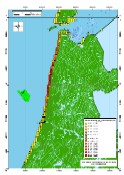 Just offshore from the Dutch town Egmond aan Zee, a wind farm has recently become operational. As part of the project, a monitoring and evaluation programme will be carried out during the construction phase and the first years of operation. The monitoring programme includes the assessment of the effects of spills caused by ship collisions with the wind farm. But how can collisions of ships with the wind farm, and the consequences of possible oil spills resulting from these incidents, be monitored when the risk of these events is very small? Modelling the frequency and consequences of these events is the only way of making a quantitative assessment of the possible increase in risk resulting from the presence of the wind farm, and assessing its significance.
Just offshore from the Dutch town Egmond aan Zee, a wind farm has recently become operational. As part of the project, a monitoring and evaluation programme will be carried out during the construction phase and the first years of operation. The monitoring programme includes the assessment of the effects of spills caused by ship collisions with the wind farm. But how can collisions of ships with the wind farm, and the consequences of possible oil spills resulting from these incidents, be monitored when the risk of these events is very small? Modelling the frequency and consequences of these events is the only way of making a quantitative assessment of the possible increase in risk resulting from the presence of the wind farm, and assessing its significance.By F.M. Kleissen, WL | Delft Hydraulics and C. van der Tak, MARIN, the Netherlands
- Category: Articles
Going Big by Thinking Small
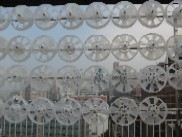 The average wind speed on this planet is 5 m/s. However, as most people in the industry know, conventional wind generators are designed to achieve optimum performance at wind speeds between 12 and 25 m/s. Sites that can provide that kind of wind energy are unusual and everybody seems happy when a wind generator works at least 30 to 35% of the time. The author describes his Motorwind concept, which he thinks will overcome this discrepancy and make wind energy more efficient and more widely available.
The average wind speed on this planet is 5 m/s. However, as most people in the industry know, conventional wind generators are designed to achieve optimum performance at wind speeds between 12 and 25 m/s. Sites that can provide that kind of wind energy are unusual and everybody seems happy when a wind generator works at least 30 to 35% of the time. The author describes his Motorwind concept, which he thinks will overcome this discrepancy and make wind energy more efficient and more widely available.
By Lucien Gambarota, Motorwave Group, Hong Kong



